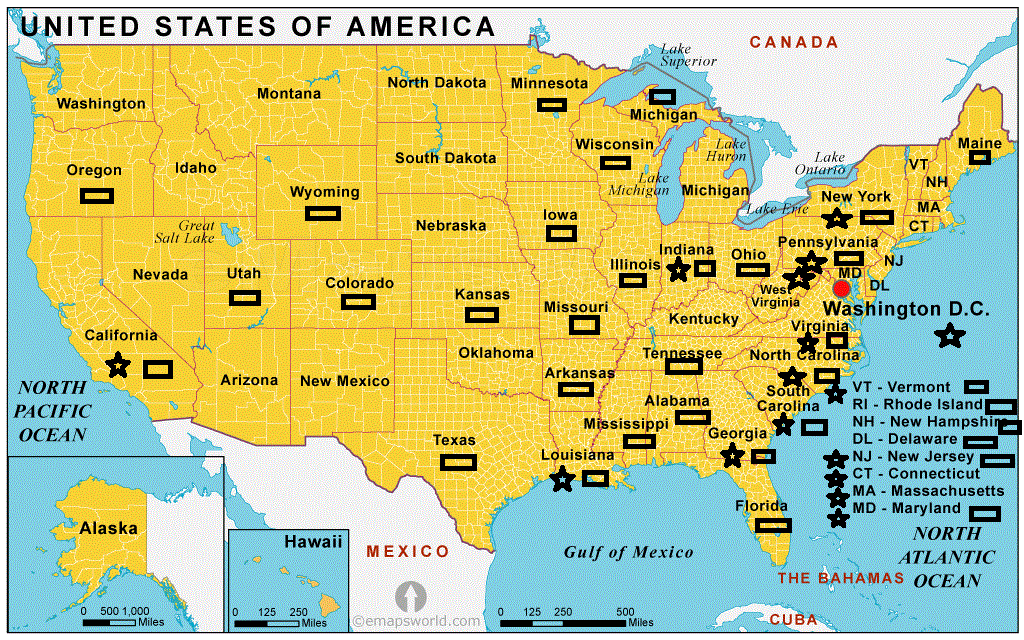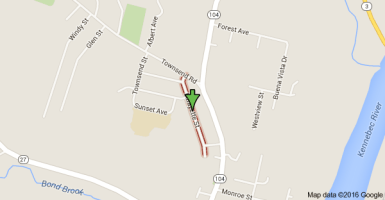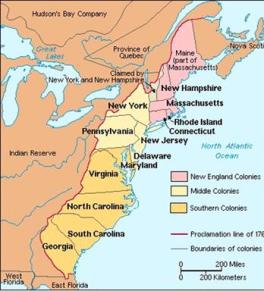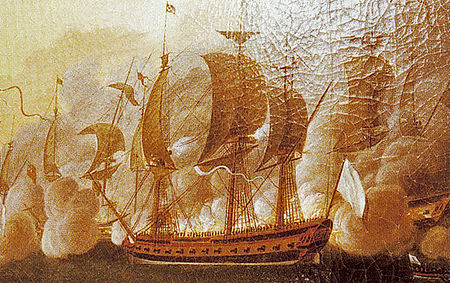The state joined the union on March 15, 1820 – State N0 23/24
https://en.wikipedia.org/wiki/Maine
Capital: Augusta, ME
https://en.wikipedia.org/wiki/Augusta,_Maine

TOPIC I (T1) – OUTDOOR SCULPTURES IN MAINE
Statues, Busts, Monuments, Memorials… Historic Parks and Places…
(No outdoor sculptures found)
TOPIC II (T2) – MANY PLACES…
Town, city, village, county, township … Historic, natural sites…may refer or are named for
General Gilbert du Motier, marquis de La Fayette or La Grange “Home” of Lafayette.
Fayette, ME
https://en.wikipedia.org/wiki/Fayette,_Maine
– a town in Kennebec County
Lagrange, ME
https://en.wikipedia.org/wiki/Lagrange,_Maine
– a town, in Penobscot County
TOPIC III (T3) – STREETS, ROADS, SQUARES…
(Places, Parks sites …)
Augusta, ME – State Capital
https://en.wikipedia.org/wiki/Augusta,_Maine

Lafayette Street
Caribou, ME
https://en.wikipedia.org/wiki/Caribou,_Maine
– Lafayette St.
Portland, ME
https://en.wikipedia.org/wiki/Portland,_Maine
– Lafayette St.
– Lafayette Square Apartments
Saco, ME
https://en.wikipedia.org/wiki/Saco,_Maine
– Lafayette St.
Waterville, ME
https://en.wikipedia.org/wiki/Waterville,_Maine
– Lafayette St.
Yarmouth, ME
https://en.wikipedia.org/wiki/Yarmouth,_Maine
– Lafayette St.
TOPIC IV (T4) – INDOOR OBJECTS, MUSEUMS …
Pictures, busts, Exhibitions …
(No information found)
TOPIC V (T5) – LAFAYETTE AND FRANCE
THROUGHOUT THE COURSE OF THE AMERICAN REVOLUTION
They played a key role in the American Revolution (1765-1783)
and during the American Revolutionary War (1775–1783)
Between 1778 and 1783,
44 177 French soldiers and sailors fought aside the “American Insurgents”,
5 040 gave their lives for their independence.
Between 1776 and 1783, France spent 1.3 billion French pounds. A huge debt for the time that drained the Treasure of the Kingdom.
Road markers, places, objects…

The 13 English colonies
The 13 states involved: Connecticut, Delaware, Georgia, Maryland, Massachusetts (South and North), New Hampshire, New Jersey, New York, North Carolina, Pennsylvania, Rhode Island, South Carolina, Virginia.
Maine was involved in the American war as the North part of Massachusetts
LAFAYETTE INVOLVEMENT DURING THE AMERICAN REVOLUTIONARY WAR
He enlisted as a volunteer without pay alongside the « Insurgents » of the 13 English colonies in America who declared independence unilaterally July 4, 1776

- Marquis de Lafayette as a Major General of Continental Army in 1779.
Portrait by Charles Willson Peale
*Lafayette: First military campaign: from June 1777 to January 1779
*Lafayette: Back in France to plead the cause of the “Insurgents”: from February 1779 to March 1780
*Lafayette: Second military campaign: from April 1780 to December 1781
FRANCE INVOLVEMENT DURING THE AMERICAN REVOLUTION
Louis XVI – King of France and Navarre
1768-1777 – France secretly helps the American Insurgents
1768: Baron de Kalb a Bavarian-born French military, traveled to America on a covert mission (to determine the level of discontent among colonists) on behalf of France.
1775-1776-1777: France secretly sent military supplies. During these three years, France had been sent secretly to the American rebels over five million French pounds “livres tournoises” of aid.
1778-1782 – France officially and fully aids the American Insurgents
1778 (February) – Franco American Treaty
(Later Spain (in 1779) and Dutch (in 1780) became allies of France)
*1778-1779 – 1st “French Expedition” under Comte d’Estaing
*1780-1781-1782- 2nd “French Expedition” under Comte de Rochambeau
*1781- The French Navy under Comte de Grasse joins the Franco-American ground Forces in Yorktown, VA
L’Hermione in Castine, ME / Penobscot Bay – May 14-17, 1780
https://en.wikipedia.org/wiki/Castine,_Maine
https://en.wikipedia.org/wiki/Penobscot_Bay
Since 1780 the Atlantic was under the control of the British… After the dramatic failure of the “Penobscot Expedition” of the continental army (July 24/August14, 1779), around the mouth of the Penobscot and Majabigwaduce Rivers at what is today Castine, ME. 474 killed, wounded, captured or missing and all ships lost (19 warships and 25 support ships.) The « United States » worst naval defeat until Pearl Harbor 162 years later in 1941.
BUT THE SITUATION CHANGE when L’Hermione under the command of Lieutenant de Latouche arrive in Boston on April 28, 1780, carrying General Lafayette and the secret news that he had secured French reinforcements (5,500 men and 5 frigates) for help George Washington and the American Revolutionary War.

The revolutionary council of Massachusetts asked Latouche if he would be willing to sail to Penobscot Bay May 14-17, 1780 for a quick military intelligence-gathering cruise, checking on the strength of the British garrison at Fort George. It was his first mission along the American east coast, the last one was at Yorktown during the siege and the surrender of Cornwallis and the British troops September 28, 1781 – October 19, 1781
TOPIC VI (T6) – LAFAYETTE VISIT (August 4 to December 22, 1784)
Road markers, places, objects…

The United States 1783-1803
In 1784, Lafayette visited America, where he enjoyed an enthusiastic welcome; he visited all the 13 states except Georgia. Maine was the north part of Massachusetts
(No visit. The State did not exist in 1784)
TOPIC VII (T7) – LAFAYETTE’S FAREWELL TOUR (1824-1825)
Road markers, places, objects…

The United States in 1825
The 24 states visited : Alabama, Connecticut, Delaware, Georgia, Illinois, Indiana, Kentucky, Louisiana, Maine (ex-Massachusetts / North part), Maryland, Massachusetts, Mississippi, Missouri, New Hampshire, New Jersey, New York, North Carolina, Ohio, Pennsylvania, Rhode Island, South Carolina, Tennessee, Vermont, Virginia. Plus Washington D.C.

Detailed Timeline
Lafayette visited New England: Massachusetts, Rhode Island, Maine, New Hampshire, Vermont, and Connecticut twice, spending a month all told in the region.
The First New England Visit (From August 20 to September 04, 1824)
From August 21 to August 24. Heading north from Staten Island, NY he stopped briefly in New Haven, Conn., Providence, R.I., Stoughton, Mass., and Boston, Mass.
On August 25 He arrived in Cambridge, Mass.
On August 26 he stopped in five Massachusetts cities and towns: Lexington, Concord, Salem, Marblehead, and Newburyport and settled into the Boston area until August 31. (During that time he visited former President John Adams in Quincy, Mass.)
On September 1, he visited Portsmouth, N.H., then headed south again to Boston and Lexington.
On Sept. 3. Worcester, Mass., and Tolland, Conn., were on his agenda
On Sept. 4, Hartford and Middletown, Conn. were on his agenda
…/…
He then visited familiar places: Philadelphia, Delaware, Virginia. He spent some time in the new capital, Washington, D.C. then south to Maryland, the Carolinas, and Georgia. He turned west to see the new states of Alabama, Mississippi, and Louisiana, then up the Mississippi River in a steamboat to Missouri, Tennessee, Kentucky, Illinois, Indiana, and Ohio. Then he traveled back through Pennsylvania to New York, where he saw Niagara Falls and went to Albany by way of the Erie Canal. From Albany, he traveled straight to Boston.
…/…
Second New England Visit (From June 17 to June 29, 1825)
On June 17, 1825, Lafayette began his second New England tour by laying the cornerstone of the Bunker Hill Monument – Boston Mass
On June 22, Lafayette spent the night in Dover, N.H.
That night, a delegation of citizens from South Berwick, Maine, invited him to breakfast and propose him to visit their state. He accepted.
June 23 – Lafayette crosses into Maine at 8AM via South Berwick, ME and spent the day in Saco, ME and Biddeford, ME.
South Berwick, ME
https://en.wikipedia.org/wiki/South_Berwick,_Maine
Saco, ME
https://en.wikipedia.org/wiki/Saco,_Maine
Biddeford, ME
https://en.wikipedia.org/wiki/Biddeford,_Maine

The three-story federal building in Biddeford was built in 1798 by Captain Seth Spring, an entrepreneur and business owner which became known as Spring’s Tavern, and in the second half of the 19th century converted to apartments and now used as the Deering Lumber offices
The Spring’s Island Tavern was a popular stopping point for travelers on the Kings Highway (now Elm Street/Route 1). It was here that Spring entertained General Lafayette on his 1825 tour into Maine.
- June 24 Lafayette stops in Scarborough, ME at 7AM and then at 9AM was welcomed at Portland, ME by Maine governor Albion Parris, Bowdoin College President William Henry Allen, Henry Wadsworth Longfellow’s father Stephen Longfellow.
Scarborough, ME
https://en.wikipedia.org/wiki/Scarborough,_Maine
Portland, ME
https://en.wikipedia.org/wiki/Portland,_Maine

Lafayette finally arriving in Portland to great fanfare. The Brunswick Light Infantry had marched the 26 miles to Portland in uniform to be one of three military escorts present. The crowd of 15,000 included Bowdoin Trustees, Overseers, and students, who heard Stephen Longfellow (the poet’s father), deliver greetings from the city.
In presenting the honorary degree, Bowdoin President William Allen called the last surviving general of the Revolutionary War “…an enlightened and unshaken friend of regulated liberty.” Ever gracious, Lafayette responded, “While I much regret not to be able to offer these sentiments at the seat of your so interesting institution, I thank you for the opportunity you have afforded me of a personal acquaintance with you, Gentlemen of that College, where young Republicans, the hope of the Country, are instructed in every literary and scientific branch, and above all in the first of all sciences, the science of freedom, equal rights, and self-government…”
- Sunday, June 27 — Lafayette leaves Portland, ME early in the morning, passes through Saco, ME and Biddeford, ME, and arrives in Concord, NH and that same day arrives late (~10 p.m.) in Claremont, NH
On June 27, he arrived late at night in Claremont, N.H.
On June 28, Early in the day, he crossed over the Cornish Bridge to Vermont, passing through Woodstock, VT late in the morning, then took a stagecoach over the mountains to Barnard, VT, and Royalton, VT Randolph, VT and Barre, VT. He spends the night in Montpelier, VT at The Pavilion.
On Wednesday, June 29, 1825, he left Montpelier, VT for Burlington, VT his last stop in New England.
On June 29, 1825, he traveled overnight south on Lake Champlain past Mount Independence on the steamboat Phoenix II and arrived Whitehall, New York June 30, 1825

